Many needlewomen began to interest how to properly knit openwork tracks, schemes and descriptions always help to understand the basics of technology. Products made as viscous will enjoy many needlewomen who begin to know the world of knitting, and experienced professionals. After all, the foundation of all work is openwork schemes. By the way, they are quite simple to memorize and knit, you only need to be able to understand the schemes and symbols.

They will enjoy all fashionable, as they already have a lot of lay no inferior to other patterns. Vertical stripes make the figure more slimmer, so the products are popular at the style. The tracks are suitable for the main element, you can insert on face or wrong to make the craft more interesting.
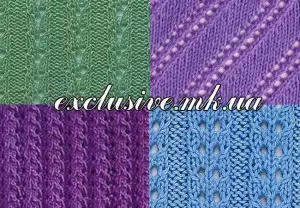
It should be remembered that the basis of all products, including openwork mating, is a nakida and pricked loops. The usual and easiest way to knit the vertical track is in all the facial to make a nakid, tissing two loops at the same time. Do not forget to ensure that the Nakida is above each other. To do this, carefully examine the scheme of the product. For the invalid row, all the loops and nakids can only be knitted. In this version, all the product is connected to the front side, passing between the tracks of three facial hinges.
By the way, it all depends on the background and the number of loops. Place all the camps and make the same slopes, because it is very easy to spoil the whole pattern.
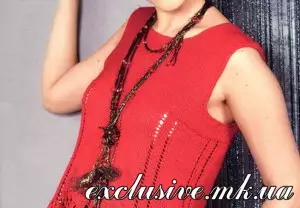
A little secrets
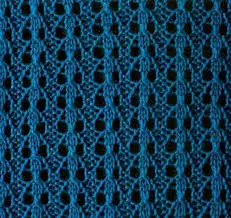
If you combine the nakid on one loop in each facial row, then it will turn out of a completely different diagonal band. Each element will consist of two nakids and two kettops that are closed together and inclined to the right. If you want the elements to be left to the left, then you need to combine the Nakida to the left, check two loops after the Nakid, as if a simple broach. Always need a scheme.
Article on the topic: Quad bike 4x4 based on Oka
Go directly to the sketch itself. It will consist of 2 row and also 9 kettops.
Optionally, it can be performed as an openwork rubber. If it is the main one, you can just go through it iron to sip the product.
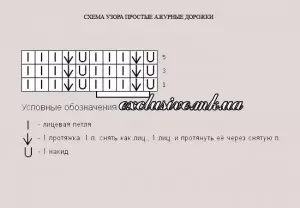
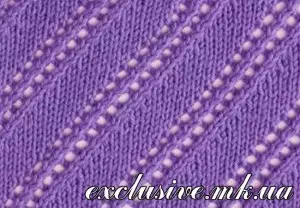
Pattern consisting of 5 kettops is located on the background of the inside.
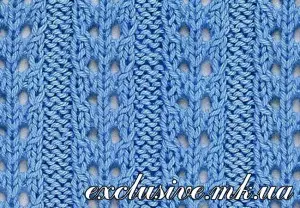
The rapport of all tracks is 5 kettops + loops for the background, but for this master class, we take 3 loops between the product paths. Look at the scheme, there are featured rows. For the invalo, it is necessary to knit on the placement of the looping - that is, only with the involves. And so repeat the pattern from 1 to 4 rows.
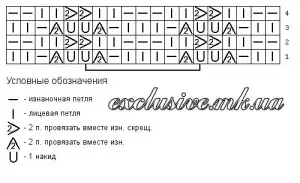
There is another pattern - double openwork. It is completely performed by two alternating rows. Rapport is 10 kettles. It is necessary to knit according to the scheme, where the facial and invalid rows are fully shown.
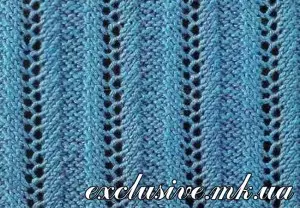
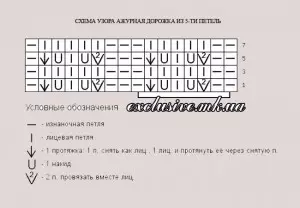
Let us turn to the rapport of the "spikelet" pattern.
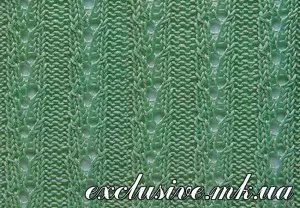
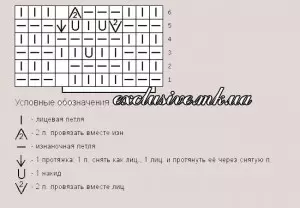
It consists entirely of 7 kettops, as well as 3-kettles, so that a symmetric pattern turned out. It is necessary to knit it in the picture below, not forgetting to repeat from 1 to 6 rows. Do not pay attention to empty cells - this is visibility.
Here are the stages of work.
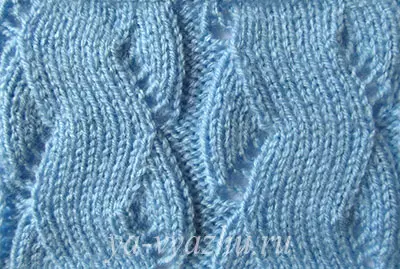
For the first row * check 3 of the outbreak, 4 facial *, and then again 3 irons. Go to the second, here knitting happens on the loop - in their direction. The third row is a bit more complicated, new options are added - * 3 involnery, then 2 facial, making the nakid, 2 front * are again *, finish a row with 3 irons. We continue to work, go to the fourth - there will be 3 facial, * 5 irons, and then 3 facial *. The fifth row is the longest - * 3 invalid, and then 2 facial are in prior to, we will make a nakid, one facial, again, make a simple stretcher, finish 3 facial.
Go to the new "vertical ornament".
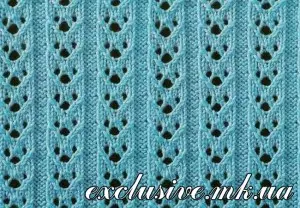
It easily attracts attention to an interesting texture and simple viscous. Rapport consists of 9 kettops and 6 rows. Facials in the scheme, and then insoluble - we do in the pattern, as the loops are placed. Nakida is best to do wrong.
Article on the topic: Volumetric Spit: Scheme with description and video
These are such beautiful rows turn out. Imagine what product will be, if it is written by one of these options.
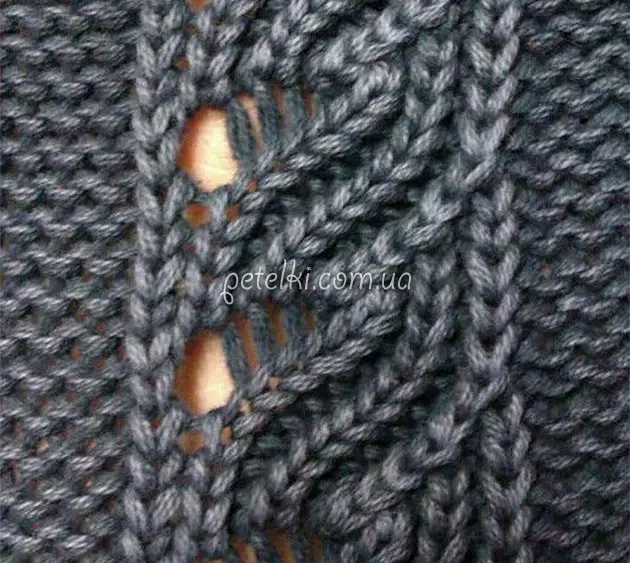
Another option suitable for mating sweaters, as well as to insert on the sleeves of a sweater.
On the scheme depicted all rows - even and odd. Rapport knit somewhere from 1 row and up to 6 in height. In the wrong coming we get two with facial. It is necessary to knit like two with hooks. We remove two hinges as the facial, reinforce on the right spoke, to cross the left. You do not need to twist, it is necessary to check with the wrong, grabbing the rear wall of the product.
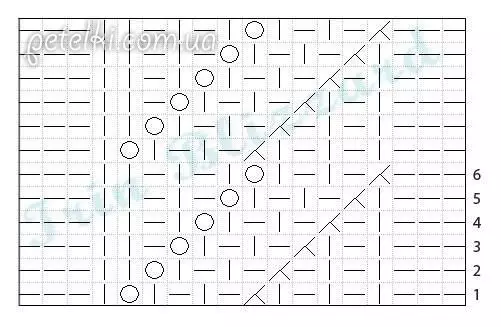
Be sure to consider the number of hoppers not to make a mistake. If you make a mistake, you will be checked, then the handicraft will be uneven and ugly.
Video on the topic
Do not be mistaken if the first products do not work. Contact professionals for help. Look at the video lessons where all stages of work are shown in very detailed. The charm of such experience is that you can repeat all the actions for the craftswoman. Thus, skill is purchased. Look at different patterns that still exist. And then luck will always be on the side!
